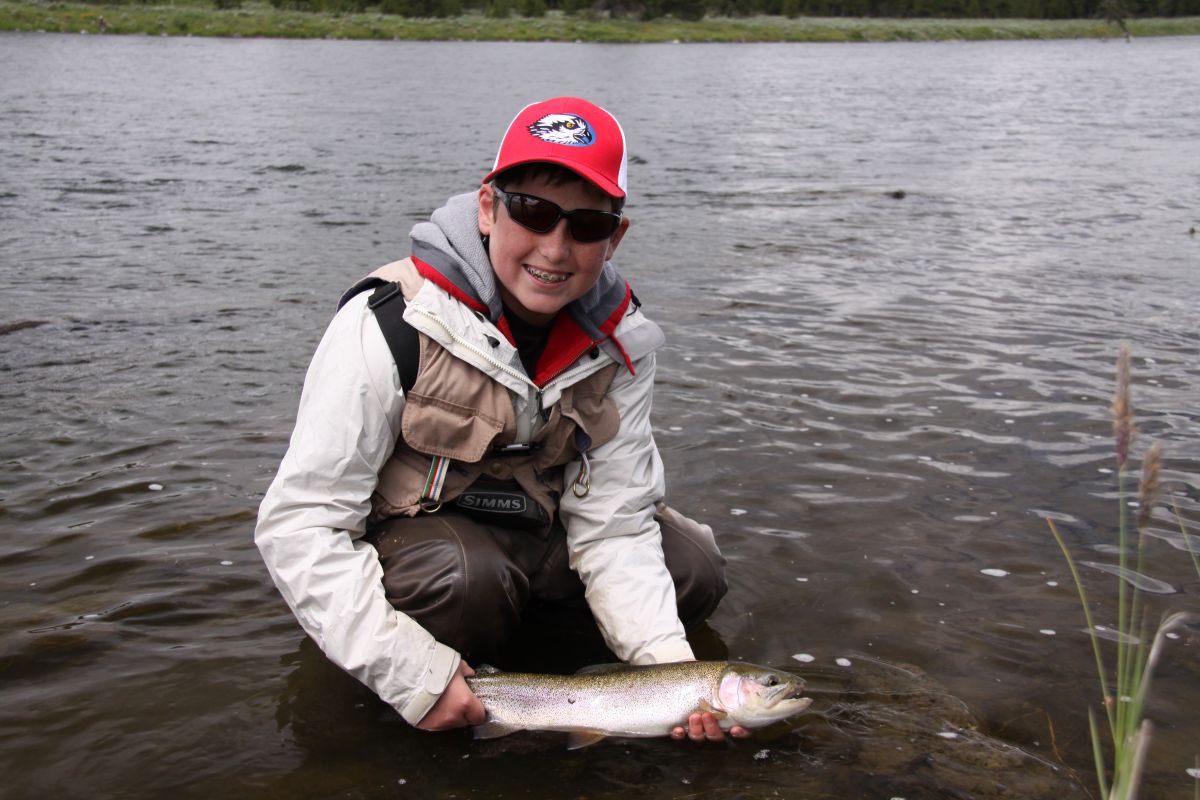In recent years I have sometimes struggled to separate the personal importance of fishing hatches larger than size 18 or leaving the season of gloves, heavy fleece, and covered ears. In most years, however, both comforts tend to arrive together around early May when conditions are right for streamside willows to come into bud and the first caddis of the year to begin their emergence.
 Like nearly all willows and caddis, I find it difficult to tolerate long periods of below freezing temperatures, especially while in pursuit of rising trout. And with the sharp vision of youth now only a memory, my eyes become instantly grateful when a size 14 dry fly can attract the kind of enthusiasm from trout that only the warm season can inspire.
Like nearly all willows and caddis, I find it difficult to tolerate long periods of below freezing temperatures, especially while in pursuit of rising trout. And with the sharp vision of youth now only a memory, my eyes become instantly grateful when a size 14 dry fly can attract the kind of enthusiasm from trout that only the warm season can inspire.
In the U.S., the second Sunday in May is a day of honor for mothers nationwide which, by itself, is of no small significance. In much of the northern Rockies, however, Mother’s Day coincides with the appearance of a sizeable, mostly brown caddis that begins a string of like insects that will stretch into early autumn. And while not always the dominant insect of choice, caddis in a variety of sizes and colors play a substantial role in the diet of trout throughout the most comfortable months of the year.
Like mayflies, caddis provide opportunity to fish weighted imitations in their subsurface form. Cased and free living larvae are prime attractions for trout in nearly any season. Pupae, the second stage, become available just prior to and during emergence and are fished differently than the deep, dead drift method that is appropriate for the larval stage.
My favorite pupal imitation is a weighted Ascending Caddis that is fished either upstream with a lift or across and downstream with a twitching motion applied by the rod tip. With naturals being active and often quick in their rise to the surface, the take on a tight line can be sudden and forceful as the fish rushes to engulf the fly before it can escape the water.
During emergence, an aggressive rise that moves a lot of water indicates a trout taking rising caddis pupae close to the surface. Duplicating the appearance and behavior of the natural in this situation means fishing a submerged rather than floating pattern.
 A floating pupae pattern like the CDC Bubble Back Caddis will imitate the brief but often distinct period between the transition from subsurface pupa to winged adult. Fished on the surface without drag or perhaps with a slight twitch, the Bubble Back Caddis creates an illusion of vulnerability if only for a few seconds. However, this slight window of enhanced opportunity can be enough to attract a trout’s attention.
A floating pupae pattern like the CDC Bubble Back Caddis will imitate the brief but often distinct period between the transition from subsurface pupa to winged adult. Fished on the surface without drag or perhaps with a slight twitch, the Bubble Back Caddis creates an illusion of vulnerability if only for a few seconds. However, this slight window of enhanced opportunity can be enough to attract a trout’s attention.
Caddis in the winged stage are known to be more active on the water than mayflies. Following a traditional approach to dealing with this mobility, I utilize a pattern featuring a dubbed body with hackle palmered along its entire length. This, combined with a wing of paired CDC feathers, provides a light foot print on the water and allows the fly to be inched across the surface when such behavior is called for. Flotation of this style is excellent on most water but I will sometimes add a small amount of elk hair to bolster performance on extra rough currents.
The CDC Henry’s Fork Caddis was inspired by big, selective trout feeding in clear and slow moving water. Although this pattern floats quite low on the water it possesses excellent flotation and visibility when compared to most other slow water caddis patterns. I find the Henry’s Fork Caddis to be particularly effective on summer mornings and evenings when the temperatures are cooler and the naturals mostly sedate on the water.
Unlike some who tend to trivialize the value of caddis in comparison to well-known mayfly hatches, I carry a rather extensive selection of specialized caddis patterns. The following four patterns, however, comprise a sound foundation for addressing most of what will be encountered during a caddis emergence and their subsequent return to the water when eggs are deposited and the cycle ends.
The following is a sampling of some of the most common colors:
 Tan Ascending Caddis
Tan Ascending Caddis
Hook: TMC 206 BL size 12-20
Thread: Tan 8/0
Rib: Copper Wire
Back: Brown Marabou
Abdomen: Tan Dubbing
Legs: Brown Partridge fibers
Antennae: 2 Wood Duck fibers
 Tan Bubble Back Caddis
Tan Bubble Back Caddis
Hook: TMC 206 BL size 12-20
Thread: Tan 8/0
Shuck: Sparse tuft of Tan dubbing over 3 Wood Duck fibers
Abdomen: Tan CDC feathers looped over Tan dubbing to create a humped effect.
Hackle: Brown Partridge
Thorax: Brown Dubbing
 Brown CDC Palmered Caddis Adult
Brown CDC Palmered Caddis Adult
Hook: TMC 100 BL size 12-20
Thread: Brown 8/0
Hackle: Whiting Cree or Grizzly dyed brown
Body: Brown Dubbing
Wings: Paired Brown CDC feathers
Antennae: 2 Wood Duck fibers
 Olive CDC Henry’s Fork Caddis
Olive CDC Henry’s Fork Caddis
Hook: TMC 100 BL size 12-20
Thread: Olive 8/0
Abdomen: Olive Goose or Turkey Biot
Wing: Paired Med. Dun CDC feathers
Over Wing: Brown Partridge fibers
Thorax: Peacock Herl
Hackle: Whiting Grizzly dyed dun trimmed on bottom


Leave a Reply